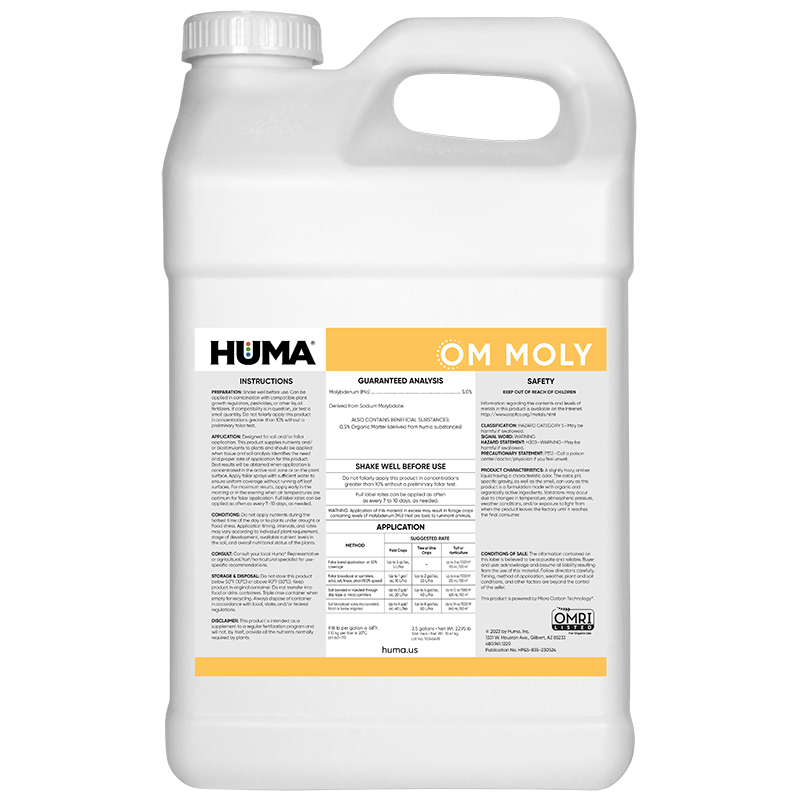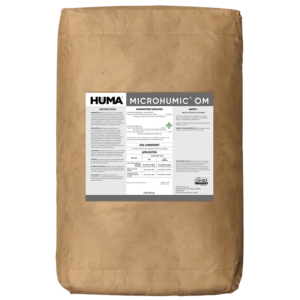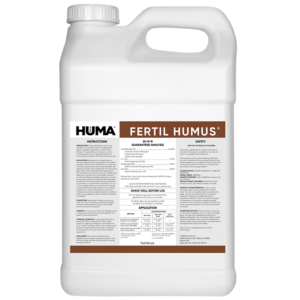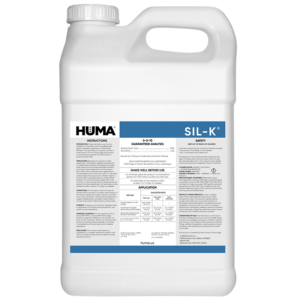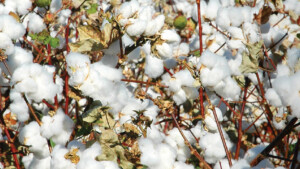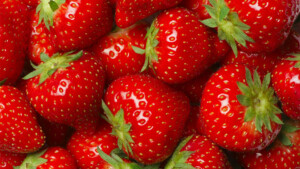OM MOLY
Benefits of Use:
- Effectively treats molybdenum deficiency symptoms
- Essential for nitrogen fixation
- Is a co-enzyme necessary to transform nitrogen to amino acids for protein synthesis
- Is essential for the functions of symbiotic nitrogen-fixing bacteria
- Provides quick crop response and can be applied just prior to actual crop need
- Can be applied foliarly (according to label directions) without risk of phytotoxicity
- Can be effectively tank-mixed with other organic crop inputs
Deficiency Symptoms—When to Apply:
- Plant/soil is molybdenum deficient
- In young plants, stunted growth and yellowish-green leaves
- In older leaves, light green followed by yellowing and drying or shedding
- Shoots short, thin; growth upright and spindly; flowering reduced
FAQs
Related Products
Related Case Studies
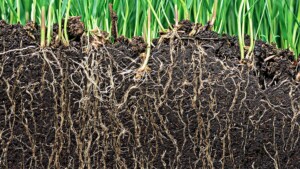
Huma Pro® Stimulates Rhizophagy Cycle of Microbes to Increase Root Growth
Objective The purpose of this research project was to evaluate how humic acids stimulate microbial activity and initiation of the rhizophagy cycle (in which plants cultivate microbes on their roots and then absorb them to extract their nutrients). Huma® Huma Pro®, a liquid 6% humic acid product, was used as the humic acid biostimulant source.
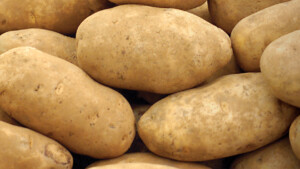
Huma® Fertilizer Program Improves Potato Yield by 5%, With 200% ROI
Background Huma® liquid fertilizer programs with Micro Carbon Technology® provide growers with efficient crop nutrients via foliar spray or irrigation at the exact time crops need them. Precision timing of efficient nutrition provides better crop yield and quality. Objective The focus of this study was to assess how the efficient Huma® nutritional products affect potato

Fall Soil Application of Fertil Humus® Increases Illinois Corn Yield and ROI
Background Feeding beneficial soil fungal activity can enhance aerobic decomposition of organic matter and build a humus-rich soil that releases nutrients tied up in crop residues. This can positively impact crop yield and lead to a higher return on investment. Objective The objective of this study was to observe how a fall application of Huma®
Related Blog Posts

Research Report: Biostimulant Effect of Humic Acids on Tomato Plants Under Nutritional Stress
In a research study, originally published in Frontiers in Plant Science, May 2021, Vol. 12:660224, the biostimulant properties of humic acid (HA) were tested on Micro Tom tomato plants under increasing nutritional stress. The results confirmed the positive role humic acids play in enhancing nutrient efficiency uptake in plants. A team of scientists from the

This Week in Ag #85
We’re now five weeks away from a national election. The economy, crime, securing the border and foreign policy are top issues for most voters. But what about farmers? For answers, just look at what they value most: family.

“Trust but Verify”: China’s New Soybean Deal
China’s renewed commitment to purchase millions of tons of U.S. soybeans has farm country buzzing with optimism. But as past trade deals have shown, promises from Beijing don’t always sprout into reality.

